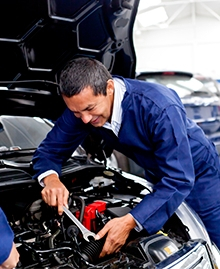Discover How They Work and How They Differ
Clutches are vital to the operation of Internal Combustion Engine vehicles and rely on clutch hydraulics to properly function. You have likely already encountered different types of hydraulic systems, and as fully hydraulic systems become more common, it’s a good idea to familiarise yourself with the functioning of these different clutch hydraulics. In this 14-minute webinar, you will learn about the differences between the main types of clutch systems.
The Evolution of Clutch Hydraulics
Clutch hydraulics have evolved from full mechanical systems to semi hydraulic systems to, most recently, full hydraulic systems. These systems contain different parts, but all perform the function of connecting the clutch pedal to the clutch to actuate a gear change. You’ll discover each type of system’s different components and the materials they are made of. We’ve included technical illustrations to show exactly how these systems work and each part’s role in actuating the clutch.
What Are Semi Hydraulic Systems
Changes in technology have allowed design changes with several benefits. Semi hydraulic systems offer more flexibility in design and better passenger comfort. We’ll explain the benefits of these systems over fully mechanical systems and their drawbacks compared to fully hydraulic systems. We’ll explore the different components of these systems and how they work together to actuate the clutch.
What Are Fully Hydraulic systems
Fully hydraulic systems are the latest in clutch hydraulics innovation, providing benefits like reduced parts complexity and weight savings. We’ll show how the design improves upon semi hydraulic systems and illustrate the internal workings of all three component types. You’ll discover the specific components of fully hydraulic systems and how they differ from other systems. You’ll learn about the specific parts like the concentric slave cylinder. You’ll also discover handling recommendations to avoid damaging this part.
Manual versus Robotised Gearboxes
The clutch works differently on manual vehicles versus robotised gearboxes. Using the wrong type of hydraulic fluid could cause serious damage to some systems, making them inoperable. We will delve into the design differences and explain how different materials make one type more sensitive to hydraulic fluid than the other.
Hydraulic Pipes in Clutch Hydraulic Systems
Hydraulic pipes are essential to draw the hydraulic fluid from the clutch pedal to the piston which operates the clutch. Due to their unique design constraints, different vehicle types use more rigid or flexible hydraulic pipes. You’ll learn how anti-vibration dampers improve driver comfort for the driver and which hoses are compatible with damper-equipped hydraulic systems.
Valeo Parts for Clutch Systems
At the end of this webinar, you’ll understand the main differences between mechanical, semi-hydraulic, and fully hydraulic clutch hydraulic systems. If you need to find a part quickly, you can search in the Tech@ssist parts finder portal by part number, VIN, or vehicle model. Since some clutch hydraulic systems are easily damaged by contamination or misuse, you may also want to watch our webinar on the top 5 causes of concentric slave cylinder leaks.
What You Will Learn in Our Webinar
In this webinar, you will learn:
- What are the main types of clutch hydraulics
- How do they differ in design and operation
- What are the benefits of semi and fully hydraulic systems
Afterwards, you can download materials like technical service bulletins on clutch issues like internal seal contamination, overstroke, and hydraulic leaks.
Not finding what you’re looking for? Contact us




